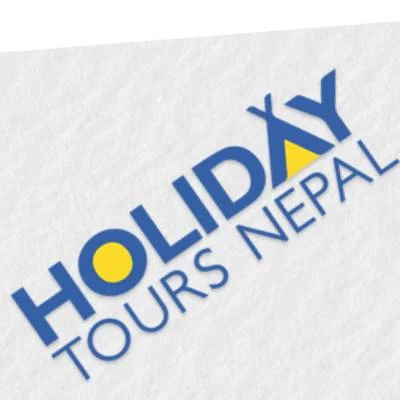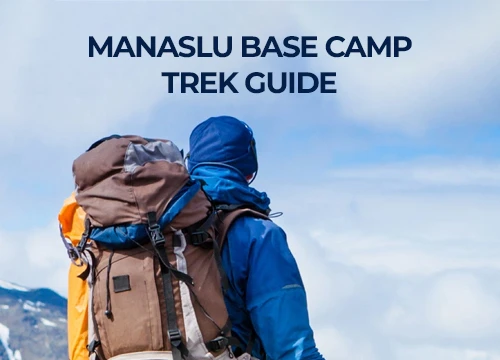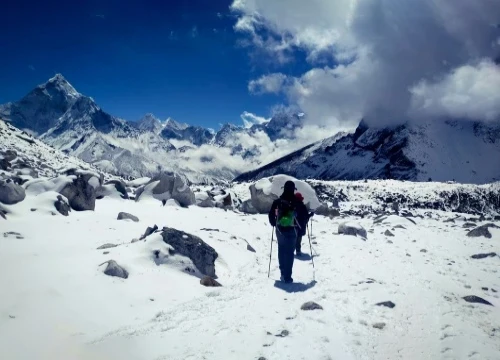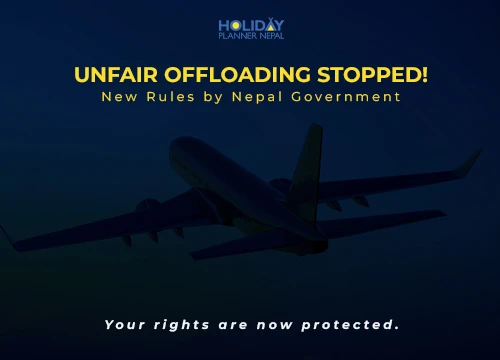In this article, we explore the numerous benefits of traveling and why Nepal should be your go-to destination. With its rich culture, stunning landscapes, and flourishing wildlife, Nepal is a travelers' paradise. With its rich culture, stunning landscapes, and flourishing wildlife, Nepal is a travelers' paradise. It is home to a plethora of activities that are sure to leave you with an unforgettable experience. From exciting treks to tranquil boat rides on Phewa Lake to a visit to the world’s highest mountain peak, a trip to Nepal is sure to be an adventure of a lifetime. Not only will you have the chance to explore the many attractions of Nepal, but you will also get to experience its vibrant culture. With its friendly locals, rich heritage, and diverse cuisine, you will be able to immerse yourself in the heart of Nepal. Plus, you won't have to worry about breaking the bank, as Nepal is one of the most affordable destinations in the world.
what can 1000 $ dollars do in Nepal ?
Table of Contents
What can $1000 offer Nepal?
A budget of $1,000 can go a long way in Nepal, depending on your travel style and preferences. Some things that $1,000 could potentially cover in Nepal include:
Flights: Depending on your location of departure and the time of year you are traveling, you may be able to find round-trip flights to Nepal for around $500 or less.
Accommodation: With a budget of $1,000, you could potentially stay in mid-range hotels or guesthouses for the duration of your trip. Prices for accommodation in Nepal can vary widely, but you can expect to pay around $20 per night for a mid-range room.
Transportation: A budget of $1,000 should cover the cost of transportation within Nepal, including public transportation, taxis, and any other transportation costs such as car rentals or flights between cities.
Activities: With $1,000, you should be able to afford a range of activities and experiences in Nepal, such as trekking, rafting, and sightseeing. It is a good idea to research and compare prices to find the best deals and make the most of your budget.
Food: The cost of food in Nepal is generally quite affordable, with local meals costing around $2–5 and Western-style meals costing a bit more. With a budget of $1,000, you should be able to afford to eat out at restaurants or try local street food while still staying within your budget.
It is worth noting that these estimates are rough and can vary widely depending on your specific travel plans and preferences. It is a good idea to create a budget and try to stick to it as closely as possible to ensure that you have an enjoyable and affordable trip to Nepal.
The Benefits of Traveling: Why You Should Choose Nepal as Your Destination
So, if you're looking for a unique and unforgettable experience, Nepal should be at the top of your travel list. Here, you can expect to be charmed by its stunning landscapes, captivated by its culture, and amazed by its natural beauty. There's no better way to treat yourself than to explore this magnificent
Average amount required for traveling to Nepal
The cost of traveling to Nepal will depend on a variety of factors, including your travel destination within Nepal, the time of year you are traveling, your mode of transportation, your accommodation preferences, and your planned activities. Some general estimates for the cost of a trip to Nepal can be found below.
Flights: Prices for flights to Nepal can vary widely depending on your location of departure and the time of year you are traveling. Generally, you can expect to pay anywhere from $500 to $1,500 for a round-trip ticket from the United States to Nepal.
Accommodation: Prices for accommodation in Nepal can also vary widely, depending on the location and type of accommodation you choose. Budget accommodations such as guesthouses and hostels can cost as little as $5–10 per night, while more luxurious options such as hotels and resorts can cost $50 or more per night.
Transportation: Nepal has a well-developed network of public transportation, including buses and microbuses that can be used to travel between cities and towns. Prices for public transportation can range from $1–5 for short trips to $10 or more for longer journeys.
Activities: The cost of activities in Nepal will depend on the specific activities you choose to do. Some popular activities, such as trekking and rafting, can be expensive, while others, such as visiting temples and museums, can be more budget-friendly.
Trekking: Trekking in Nepal can range in cost from a few hundred dollars to several thousand dollars, depending on the length of the trek, the level of difficulty, and the type of tour or package you choose. For example, a short, easy trek such as the Poon Hill Trek may cost around $500, while a longer, more challenging trek such as the Annapurna Circuit may cost $1,500 or more.
Rafting: The cost of rafting in Nepal can also vary widely, depending on the length of the trip and the level of difficulty. A half-day rafting trip on a relatively easy river such as the Trisuli may cost around $50, while a multi-day trip on a more challenging river such as the Kali Gandaki may cost $500 or more.
Overall, it is difficult to give a specific estimate for the cost of a trip to Nepal, as it will depend on your individual travel style and preferences. It is recommended that you create a budget and try to stick to it as closely as possible to ensure that you have a pleasant and affordable trip.
There are a few things that travelers should consider before planning a trip to Nepal:
Vaccinations: It is recommended that you consult with a healthcare provider and get the necessary vaccinations before traveling to Nepal. Some recommended vaccines for Nepal include hepatitis A, hepatitis B, typhoid, and rabies.
Altitude sickness: Nepal is a country with a high altitude, and some travelers may be susceptible to altitude sickness. It is recommended to acclimatize slowly and drink plenty of fluids to prevent altitude sickness.
Travel insurance: It is a good idea to purchase travel insurance before traveling to Nepal. This can help cover the cost of medical care, trip cancellations, and other unexpected expenses that may arise during your trip.
Local customs and culture: Nepal has a unique culture and set of customs, and it is important to be respectful of these when traveling in the country. It is a good idea to familiarize yourself with local customs and traditions before your trip.
Transportation: Nepal has a well-developed network of public transportation, including buses and microbuses, but it is important to be aware of the safety standards and conditions of these modes of transportation. It is also a good idea to have a plan for getting around and staying safe while traveling in Nepal.
Accommodation: There is a wide range of accommodation options available in Nepal, ranging from budget guesthouses and hostels to luxurious hotels and resorts. It is a good idea to research and book your accommodations in advance to ensure that you have a place to stay during your trip.
Tips for budget travelers who want to visit Nepal
Nepal is a budget-friendly destination with a wide range of options for travelers on a tight budget. Here are a few tips for budget travelers visiting Nepal:
Stay in guesthouses or hostels: Guesthouses and hostels are affordable accommodation options that offer basic amenities such as beds and bathrooms. These can be found in most towns and cities in Nepal and can cost as little as $5–10 per night.
Take public transportation: Nepal has a well-developed network of public transportation, including buses and microbuses, which can be used to travel between cities and towns. These are generally cheaper than private taxis and offer a unique and authentic way to see the country.
Eat local food: Nepali food is delicious and generally quite inexpensive. Dhal bhat, a dish made with lentil soup and rice, is a popular and cheap meal that can be found at local restaurants and guesthouses.
Avoid peak tourist season: Prices for flights, accommodation, and activities in Nepal tend to be higher during peak tourist season (October-December and March-May). Traveling during the shoulder season (September-October and April-May) or the low season (June-August) can help you save money.
Book tours and activities in advance: Booking tours and activities in advance can often save you money, as many operators offer discounts for early bookings. It is also a good idea to compare prices and read reviews before booking to find the best deals.
Be flexible: Being flexible with your travel plans and open to last-minute deals and changes can help you save money and have a more spontaneous and authentic travel experience.
Top destinations for traveling in Nepal
Nepal is a beautiful and culturally rich country with a wide range of destinations suitable for travelers of all types. Some of the top destinations in Nepal for travelers include:
Kathmandu, the capital city of Nepal, is a vibrant and chaotic hub of culture, history, and religion. Kathmandu is home to many world-famous temples and landmarks, such as the Durbar Square, the Swayambhunath Temple, and the Boudhanath Stupa, as well as a lively food and nightlife scene.
Pokhara: This charming lakeside city is located in the foothills of the Annapurna mountain range and is a popular base for trekking and adventure activities. Pokhara is also home to the beautiful Phewa Lake, which is surrounded by temples, restaurants, and guesthouses.
Chitwan National Park: This protected area in the lowlands of Nepal is home to a wide range of wildlife, including rhinoceroses, tigers, and a variety of birds. Visitors can go on safari rides, take part in elephant-back rides, or simply relax in the peaceful surroundings.
Lumbini: This small town in the Terai region of Nepal is the birthplace of the Buddha and an important pilgrimage site for Buddhists. Visitors can visit the Maya Devi Temple, the Ashoka Pillar, and other holy sites, as well as learn about the history and teachings of Buddhism.
Annapurna Circuit: This popular trek takes hikers through the stunning Annapurna mountain range, passing through beautiful valleys, forests, and villages along the way. The trek can take anywhere from 7 to 21 days, depending on the route and pace.
The Langtang Valley is a beautiful and serene region located in the Himalayas of Nepal, just north of the Kathmandu Valley. The region is home to the Langtang National Park, which covers an area of 1,710 square kilometers and is home to a wide range of flora and fauna, including rare species such as the red panda and the Himalayan black bear. The Langtang Valley is a popular destination for trekkers and hikers, as it offers a number of beautiful trails through the park. The Langtang Lirung Trek is a popular route that takes hikers through the valley and up to the Langtang Lirung Glacier, providing stunning views of the surrounding mountains.
The Mustang region is a high-altitude desert region located in the northwest of Nepal, on the border with Tibet. The region is known for its arid landscape, ancient monasteries, and colorful festivals. Mustang was a separate kingdom within Nepal until the late 18th century and has a distinct culture and history that set it apart from the rest of Nepal. The Mustang region is a popular destination for trekkers, as it offers a number of beautiful and challenging trails through the region. The most popular trek in Mustang is the Annapurna Circuit, which takes hikers through the Mustang region and the neighboring Annapurna region.
The Everest region, located in northeast Nepal, is a popular destination for trekkers and mountaineers. The region is home to the highest mountain in the world, Mount Everest, as well as many other peaks over 7,000 meters (23,000 feet) in elevation. The most popular trek in the Everest region is the Everest Base Camp Trek, which takes hikers to the base camp of Mount Everest at an elevation of 5,364 meters (17,598 feet). The trek is a challenging but rewarding journey that takes about 10–12 days to complete, depending on the route and pace.
What should you pack in your bags before coming to Nepal?
Here is a list of items that you may want to consider packing for a trip to Nepal:
Passport and travel documents: Make sure to bring your passport and any other necessary travel documents, such as visas or vaccination records.
Clothing: It is a good idea to bring lightweight and breathable clothing for the hot and humid weather in Nepal, as well as layers for the cooler evenings and higher altitudes. Pack a mix of casual and formal clothing, as well as comfortable walking shoes.
Personal hygiene items: pack essentials such as toothpaste, toothbrushes, soap, shampoo, and sunscreen.
First-aid kit: A small first-aid kit with items such as painkillers, bandages, and antidiarrheal medication can be useful in the case of minor illnesses or injuries.
Cash and credit cards: It is a good idea to bring a mix of cash and credit cards for paying for expenses in Nepal. Make sure to bring small denominations of cash, as it can be difficult to break larger bills in some places.
Adaptors and chargers: Nepal uses a different type of electrical outlet, so it is a good idea to bring adaptors for your electronic devices.
Camera and other electronics: If you plan to take photos or videos during your trip, make sure to bring a camera and any necessary chargers and cables. It is also a good idea to bring a phone or other device with a reliable data connection for staying connected and navigating during your trip.
Other miscellaneous items: Depending on your planned activities and personal preferences, you may want to bring other items such as a hat, sunglasses, insect repellent, a water bottle, and a small backpack for day trips.
Accommodations for All Budgets: Where to Stay in Nepal
In Nepal, you can find a variety of accommodations to suit all budgets. From five-star luxury hotels and resorts to comfortable budget-friendly lodges and home stays, Nepal has something to offer travelers of all kinds.
In the big cities like Kathmandu, Pokhara, and Lumbini, you can find many international-standard hotels and resorts. These hotels come with all the amenities you would expect, including pocket-friendly rates. On the other hand, if you’re looking for something a little more rustic, you can find many budget-friendly lodges and homestays scattered throughout Nepal’s smaller towns and villages. These places typically provide clean and comfortable accommodations and offer a warm sense of culture and hospitality.
If you want to go even further off the beaten path, Nepal has a plethora of camping opportunities. Whether you prefer to stay in one of the many campgrounds that are scattered throughout the country or pitch your own tent in the wilderness, camping can be a great way to take in the beauty of Nepal.
No matter what type of accommodations you choose, you can be sure that you’ll have an unforgettable experience in this beautiful country.





